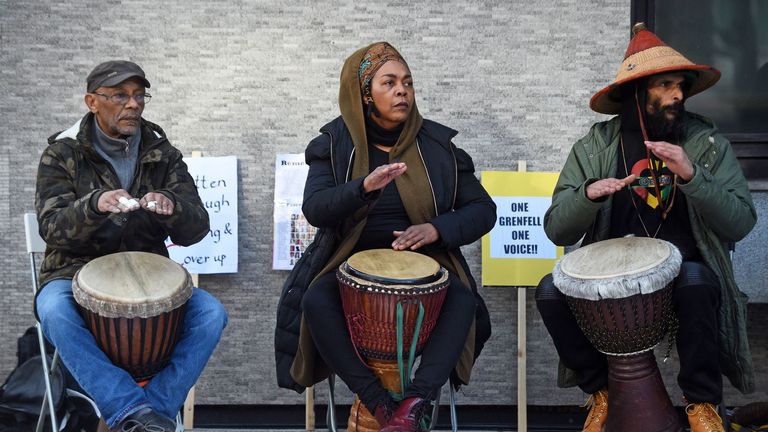Grenfell: Manufacturer warned fire would ‘race up’ cladding
The manufacturer of the plastic foam insulation that burned on Grenfell Tower admitted a year before the disaster that fire would “love to race up” combustible cladding.
Rob Warren, technical director at Celotex, made the claim in an email exchange shown to the public inquiry into the Grenfell fire that killed 72 people in June 2017.
Stephanie Barwise, a lawyer for the victims, claimed Celotex actively promoted its RS5000 product, despite knowing it should have been recalled.
In April 2015, Mr Warren told an insulation consultant not connected to the Grenfell Tower refurbishment that Celotex RS5000 insulation could be used depending on “opinion and interpretation” of building regulations.
In an email that month, he told Martin Stearne, a manager at SIG Technical Services, that he had heard of a building inspector who approved “any insulation” on the bottom 18 metres (59ft) of a tower block.
Mr Warren went on: “Clearly wrong. The fire hasn’t got a tape measure and if it starts at the ground floor it will love to race up the first 18m. Just shows you the smoke of confusion out there.”
In phase one of the public inquiry chairman Sir Martin Moore-Bick said it was “more likely than not” that Celotex’s RS5000 insulation “contributed to the rate and extent of vertical fire spread” on Grenfell Tower.
In his reply to Mr Warren’s email, Mr Stearne, whose company advised the construction industry on insulating buildings, said he would advise clients on a “buyer beware” basis.
“Never has the expression ‘smoke and mirrors’ been more appropriate,” he said.
“I think I’ll adopt a version of caveat emptor and if specifically challenged I’ll use the rock fibre options, if I’m not challenged I’ll use RS5000,” he added.
The enquiry heard that the “arrogance and complacency which caused Grenfell still rage unchecked” at the firms involved in its refurbishment.
Ms Barwise, for victims, told the inquiry: “One hallmark of the Grenfell disaster is the epidemic level of incompetence from fire safety perspectives both in the refurbishment and management of the building.”
She said there was a “culture of knowing and wilful non-compliance” at the fire safety engineers Exova.
Sam Stein QC, for victims, bereaved and survivors, said: “Those companies responsible killed when they criminally failed to consider the safety of others.
“They killed when they promoted their unsuitable dangerous products in the pursuit of money and they killed when they entirely ignored their ultimate clients, the people of Grenfell Tower.”
In a statement submitted to the inquiry, Ms Barwise said Celotex had tested RS5000 “in a way its senior executives knew” not to have been legitimate as a test to justify it for use on buildings taller than 18 metres.
The statement said: “They knew the test was used to market the product.
“Despite that, instead of recalling the product, as they should have, Celotex actively promoted the product for use on Grenfell and indeed proposed to use Grenfell as its flagship project to advertise RS5000.”
It also accused manufacturers of exploiting a lack of knowledge to promote the material.
Celotex previously told the inquiry it marketed the product after “successfully testing a rainscreen cladding system incorporating RS5000” in 2014.
Its counsel, Craig Orr, said marketing literature promoted its use on buildings taller than 18 metres only on a “rainscreen cladding system with the specific components” and that changed would “need to be considered by the building designer”.
He added: “The rainscreen cladding system described in Celotex’s marketing literature bore no resemblance to the rainscreen cladding system installed at Grenfell Tower.”
The inquiry continues.
Source: Read Full Article



